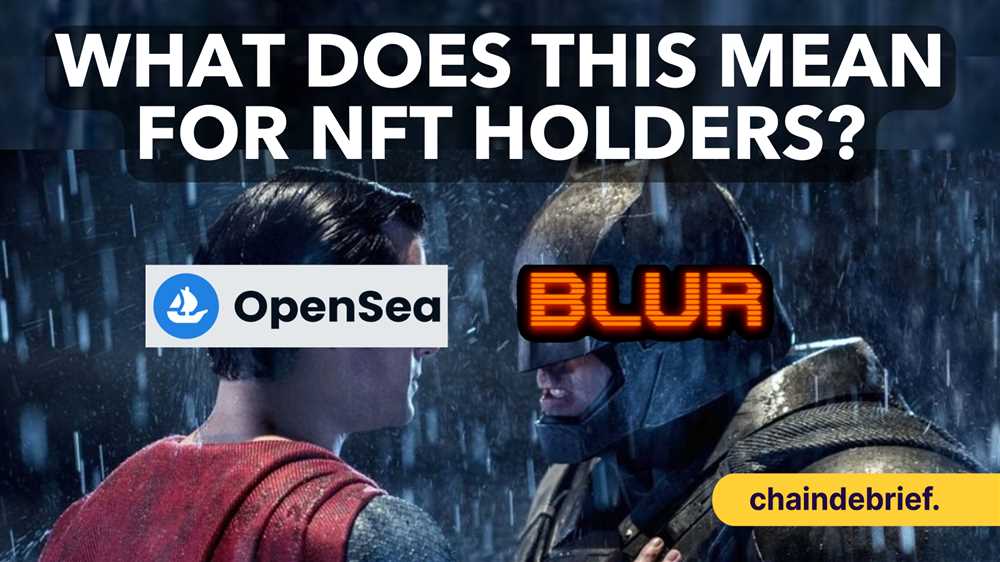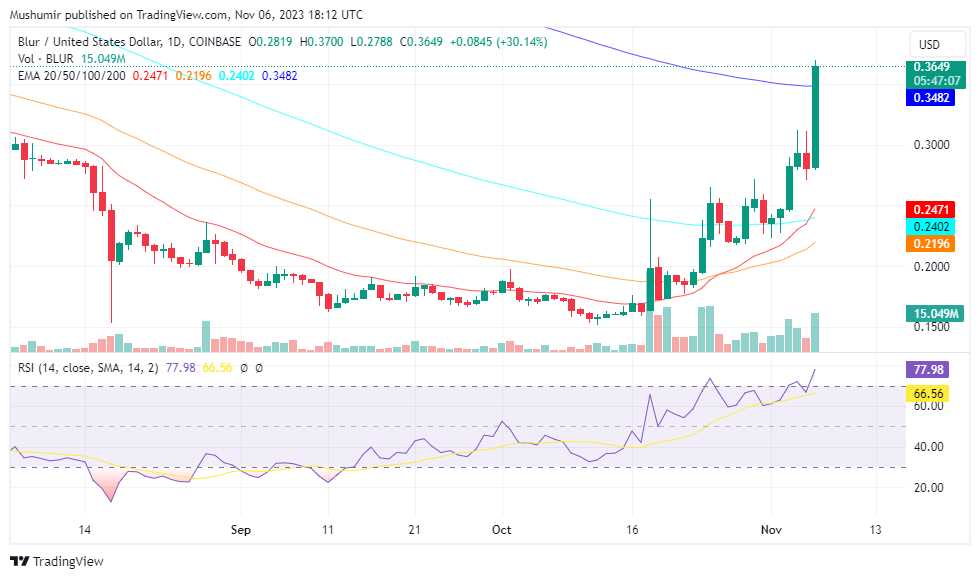
In the ever-evolving world of art and technology, a new form of digital art known as Blur NFTs is taking center stage. This innovative blend of traditional artistic techniques and cutting-edge technology has captivated the imaginations of both artists and collectors alike. Blur NFTs offer a unique way to experience art, pushing the boundaries of creativity and challenging traditional notions of what constitutes valuable artwork.
At its core, a Blur NFT is a digital image that has been intentionally distorted or blurred, resulting in a visually striking and thought-provoking piece of art. The intentional blurring creates a sense of ambiguity and mystery, inviting viewers to engage with the image on a deeper level. Each Blur NFT is created using advanced algorithms that analyze and manipulate the original artwork, adding a layer of complexity and technical skill to the creative process.
What sets Blur NFTs apart from other forms of digital art is their uniqueness and scarcity. Like traditional paintings or sculptures, each Blur NFT is a one-of-a-kind creation, making it highly sought after by collectors. Additionally, Blur NFTs are minted and verified on the blockchain, ensuring the authenticity and provenance of each piece. This combination of scarcity and digital ownership has created a vibrant marketplace for Blur NFTs, where artists can showcase their talents and collectors can acquire exclusive digital artwork.
The popularity of Blur NFTs can be attributed to the innovative fusion of art and technology. By embracing digital mediums and leveraging the power of algorithms, artists are able to explore new artistic possibilities and create visually stunning compositions. The blurred imagery challenges traditional notions of clarity and realism, pushing viewers to question their perception and interpretation of art. As technology continues to advance, it is likely that we will see even more exciting developments in the world of Blur NFTs, further blurring the line between art and technology.
In conclusion, Blur NFTs are an exciting new form of digital art that beautifully combines artistic expression with advanced technology. Through intentional blurring and the use of algorithms, artists are able to create visually striking and thought-provoking pieces that challenge traditional notions of art. The unique nature and scarcity of Blur NFTs have made them highly sought-after by collectors, creating a vibrant marketplace for these digital creations. As art and technology continue to evolve, it will be fascinating to see how Blur NFTs further push the boundaries of creativity and redefine the art world.
The Evolution of NFTs in the Art World

NFTs, or non-fungible tokens, have taken the art world by storm, revolutionizing the way we buy, sell, and own digital art. While the concept of digital art has been around for years, NFTs have brought a new level of ownership and provenance to the medium.
Before NFTs, the art world mostly relied on traditional physical artworks. Paintings, sculptures, and prints were bought and sold through galleries, auction houses, and private collectors. However, with the rise of the internet and digital technology, artists started exploring new ways to create and distribute art.
As digital art became more prominent, the question of ownership and authenticity became a challenge. How could an artist prove that a digital artwork was original and not just a copy? This is where NFTs stepped in.
NFTs are unique digital tokens that are created on a blockchain, most commonly on Ethereum. Each NFT has a specific value, which represents its authenticity and uniqueness. These tokens can be bought, sold, and traded, just like physical art pieces.
The use of NFTs in the art world has opened up a whole new range of possibilities for artists. They can now create and sell digital art directly to collectors, bypassing traditional art market structures. Artists can also earn royalties from resales of their work, ensuring a more sustainable income stream.
Another benefit of NFTs is the ability to verify the ownership and provenance of a digital artwork. NFTs allow artists to include a digital signature or certificate of authenticity with their work, making it easier to establish its legitimacy.
Furthermore, NFTs have sparked a new level of creativity in the art world. Artists are pushing the boundaries of what digital art can be, experimenting with new formats, interactive experiences, and even augmented reality. NFTs have become a platform for artists to showcase their skills and ideas in innovative ways.
While NFTs have been met with excitement and enthusiasm from artists and collectors, they have also faced criticism. Concerns about the environmental impact of blockchain technology and the potential for copyright infringement have been raised.
Nevertheless, the evolution of NFTs in the art world is undeniable. They have brought new opportunities for artists, collectors, and art enthusiasts alike. As technology continues to advance, it will be fascinating to see how NFTs evolve and shape the future of art.
Embracing the Blurry Aesthetics

Blur NFTs, also known as blurry art, are gaining popularity within the art world due to their unique aesthetic appeal. Unlike traditional artwork, which focuses on clear and precise details, blurry art intentionally obscures certain elements, creating a dream-like or hazy effect.
This deliberate blurring of the image gives the artwork a sense of mystery and intrigue. Viewers are encouraged to use their imagination and interpret the piece in their own way. By not providing all the answers, blurry art allows for a more personal and subjective experience.
The blurriness in these NFTs is achieved through the use of techniques like abstraction, soft focus, or motion blur. Artists employ these techniques to evoke emotions and provoke thought. The lack of distinct lines and forms invites viewers to explore the nuances within the piece, allowing them to immerse themselves in the artwork.
Blur NFTs also challenge conventional notions of artistry and skill. While traditional art often requires technical precision, blurry art embraces imperfections and strays from strict standards of realism. It encourages artists to experiment with different methods and materials, pushing the boundaries of what is considered “good” or “correct” art.
This blending of art and technology is not only evident in the creation of blurry art but also in the medium through which it is accessed – NFTs. These non-fungible tokens allow for the secure ownership and transfer of digital art, providing a new platform for artists to showcase their blurry masterpieces.
Embracing the blurry aesthetic opens up new possibilities for artistic expression and challenges viewers to redefine their perception of art. Whether it’s a subtle blur or a complete abstraction, blurry art invites us to question our understanding of beauty and invites us to explore the hidden depths within the image.
What are Blur NFTs?
Blur NFTs, also known as blurry NFTs, are a type of digital art that incorporates a blur effect. The blur effect is usually applied to specific parts or the entirety of the artwork, resulting in a hazy or dream-like appearance. These NFTs have gained popularity as they create a sense of ambiguity and mystery, allowing viewers to interpret the artwork in their own subjective ways.
How are Blur NFTs created?
Blur NFTs are created by artists using digital art tools and software to apply a blur effect to their artwork. This can be done by adjusting the focus, depth of field, or using post-processing techniques to add a blur effect. Once the artwork is created, it is typically minted as an NFT on a blockchain platform, such as Ethereum, and made available for purchase or auction.








Leave a Reply